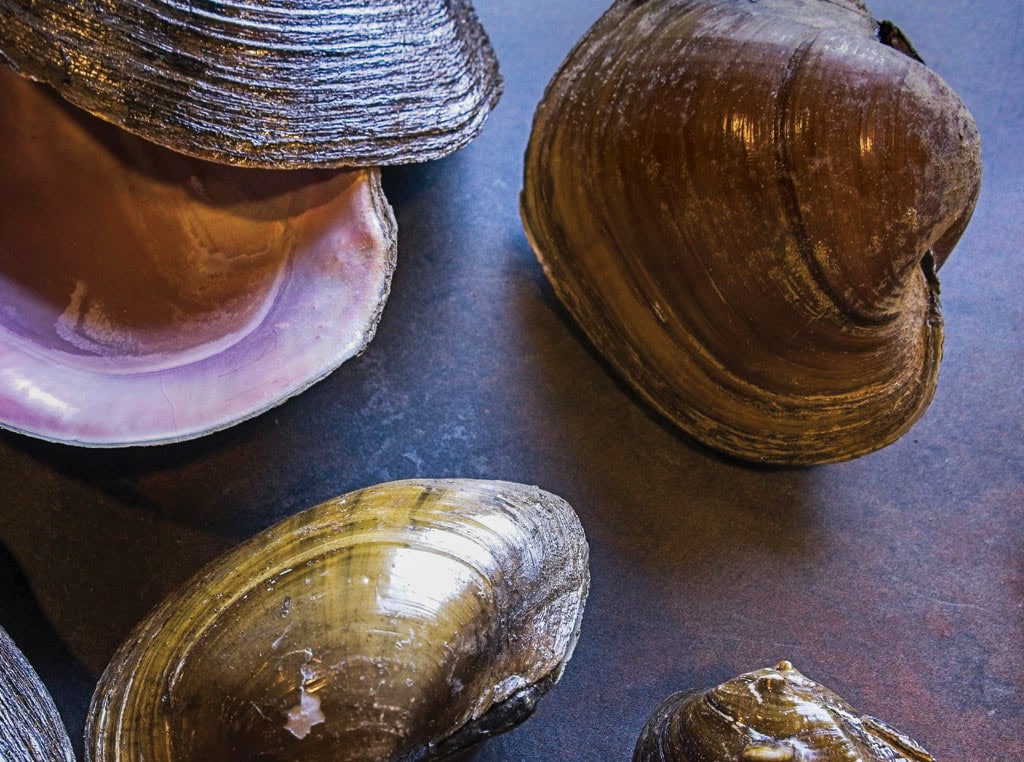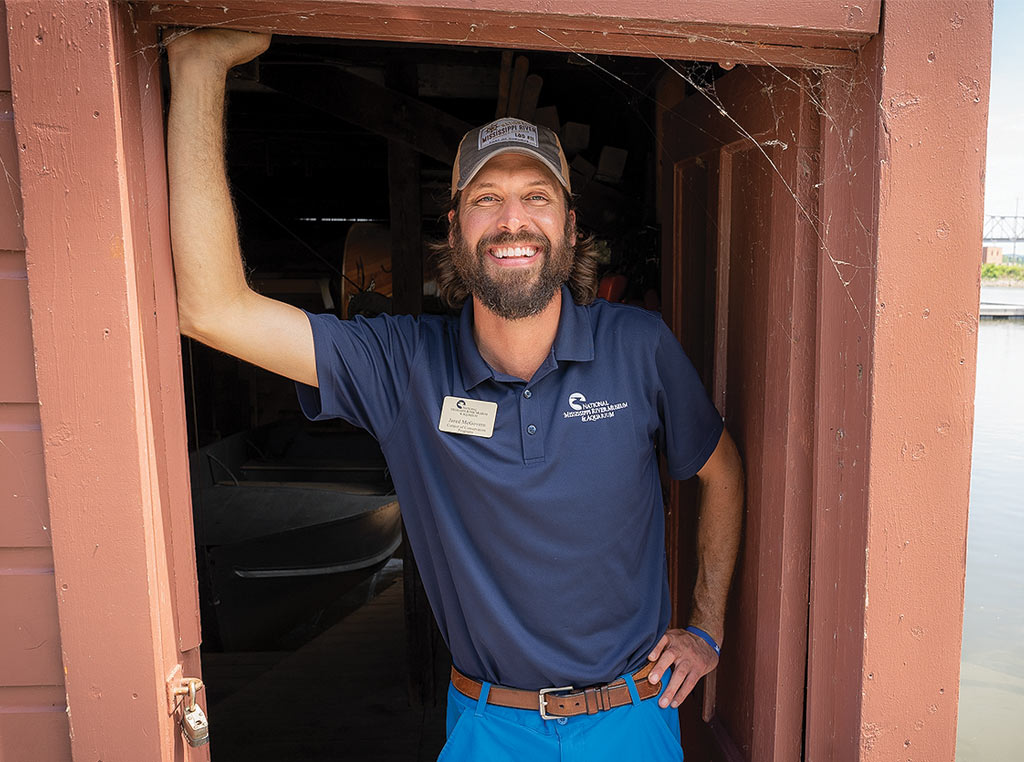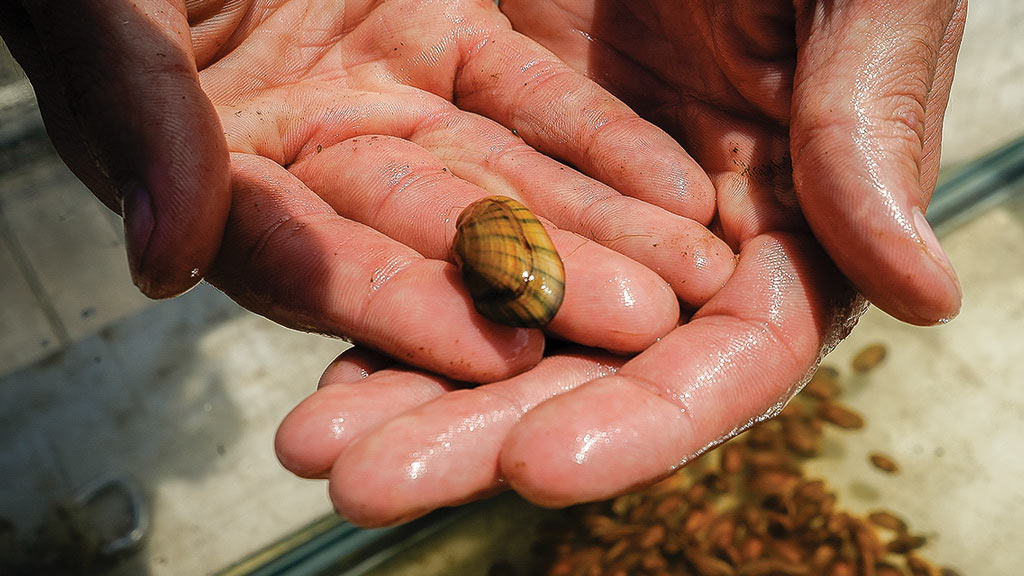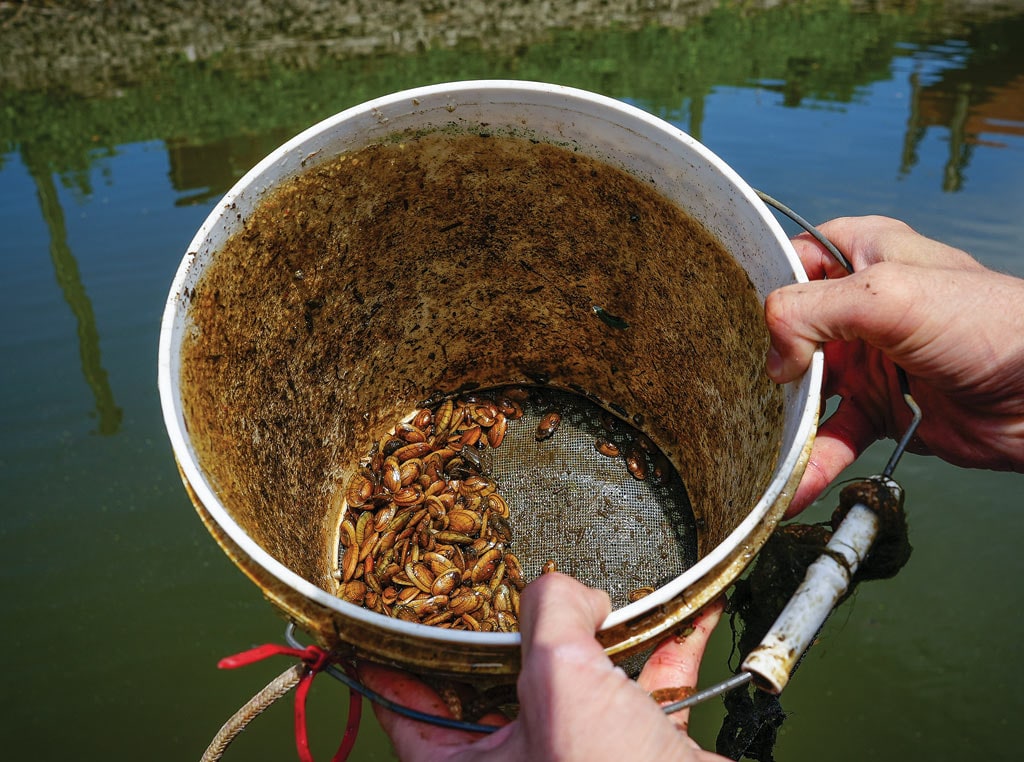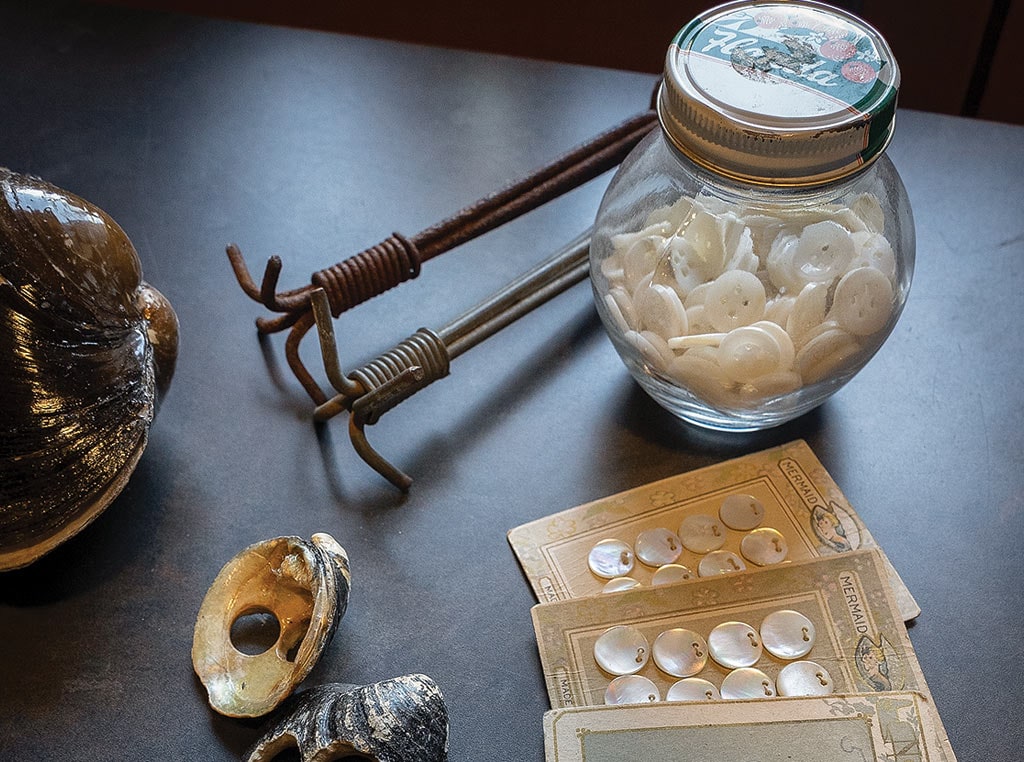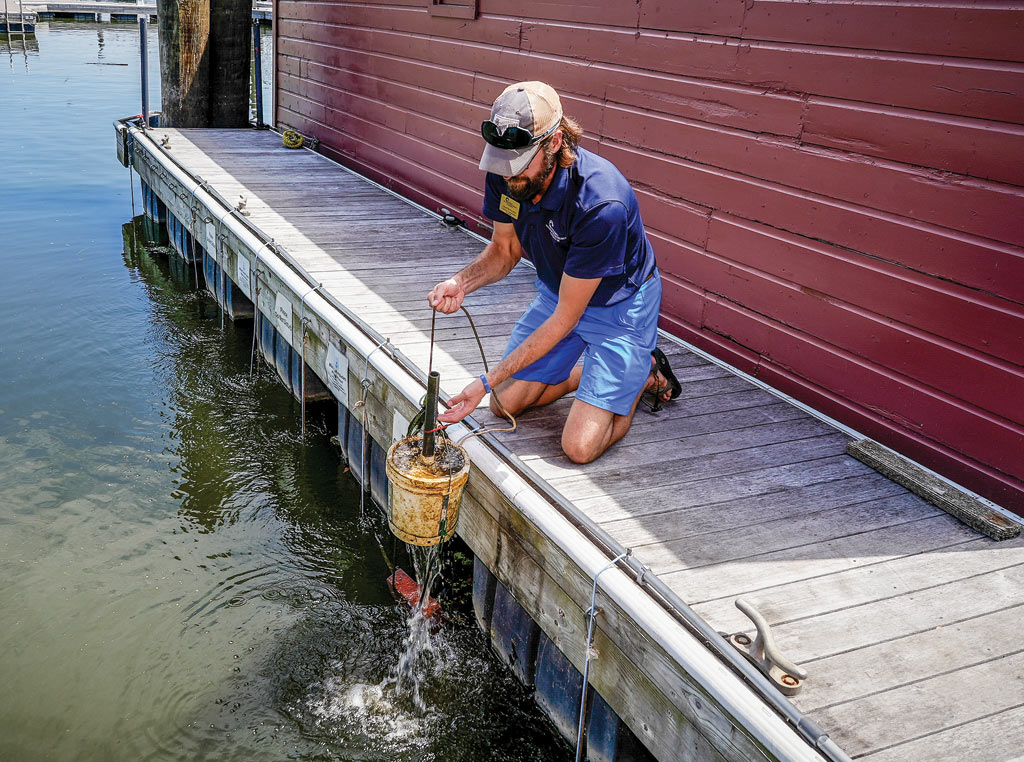Agriculture, Education March 01, 2022
A Matter of Mussels
This freshwater mollusk is an indicator species for water quality.
Jared McGovern is an enthusiastic fellow, and that attribute suits him well in his role as curator of conservation programs for the National Mississippi River Museum and Aquarium. But his passion sometimes stretches the boundaries of reality, such as those times he makes the case that, in his mind, freshwater mussels are every bit as elegant and beautiful as the monarch butterfly.
Yes, to McGovern, a species with an outer shell that has all the charisma of a rock—and an inner body that resembles a sack of slime—deserves to be loved. In fact, he insists that mussels should become the darling of the water-quality world, just as the monarch has become the darling indicator species for pollinator health—and has attracted millions of dollars in Farm Bill funding to restore butterfly habitat.
McGovern speaks in simple, declarative sentences, each of which seems to be punctuated by an exclamation point, and his reasons to champion mussels come out in rapid succession. “These are cool critters!” he exclaims. “They’re one of the most imperiled groups of animals in the world! Their breeding behavior is astonishing! They are the liver of the river!”
Above. Jared McGovern says mussels are an ideal ambassador species that highlights the need for conservation efforts. Raised in captivity, these juvenile mussels will be be placed in streams.
Flexing mussels. At the river museum, located on a 14-acre campus at the Port of Dubuque, Iowa, the freshwater mussel has become an ambassador species in teaching the public about natural history, water quality, and endangered species. The museum tells the mussel story through exhibits, laboratory experiences, and a unique outreach to area high school students.
The history of the freshwater mussel in North America is so complex that it can be difficult to decide where to begin.
Perhaps it is logical to start at the point in history before European settlement. North America was (and still is) home to the highest diversity of freshwater mussels in the world. It would be a challenge to find 20 mussel species in most other countries of the world, but 300 species were thriving here as the European settlers arrived.
They gave names to these freshwater mussel species that were both descriptive and fanciful—fat pocketbook, winged maple leaf, pink mucket, snuffbox, orange-footed pearlymussel, rough pigtoe, sheepnose.
Today, however, freshwater mussels are facing challenges, mostly tied to impaired habitat. Those range from sediment and pollution to dams and other physical changes to streams. No other group of animals faces such serious trouble. The Nature Conservancy reports that about 70% of mussels in North America are imperiled—or already extinct. That compares with 16.5% of mammals and 14.6% of bird species under similar threats.
Despite these challenges, McGovern refuses to give up on mussels. “At the river museum, we are using mussels to paint a hopeful picture of conservation biology,” he says. He points out that mussels are an indicator species of water quality; they play an important role in rivers by filtering water constantly as they breathe and feed—functioning, as McGovern likes to say, as the liver of the river.
They improve water quality by filtering out bacteria, algae, and pollutants—and accumulate contaminants in their bodies—yet mussels do not appear to be susceptible to cancer. Researchers don’t know why, but if they can find the mechanism that protects mussels from cancer, it could provide a breakthrough in fighting that disease.
Mussels also play a critical role in the food web, acting as a keystone species that creates an environment that allows other species to thrive. Mussel shells provide living space for insects and plants, and empty shells serve as nesting sites for small fish such as darters.
Mussels are long-lived invertebrates, surviving as long as 100 years, and they have a complex reproductive cycle. Mussels cannot see, and have only a jumble of nerves that serves as a brain, yet the various species make “lures” that mimic a minnow, worm, or insect to attract a specific fish host. Mussel larvae develop on the host’s gills, then drop off to become established as mature animals.
Above. A submersible rearing system called SUPSY buckets allows the National Mississippi River Museum and Aquarium to grow mussels used in scientific study for area students. The Mississippi River provided mussels for the pearl button industry, but harvest was not sustainable. The bucket system allows the safe growth of endangered Higgins eye pearlymussels, which are then placed in suitable streams to boost populations.
Hands on. The river museum engages students by providing an opportunity for them to work directly with endangered mussels. With support from a longstanding partnership with the U.S. Fish and Wildlife Service’s Genoa National Fish Hatchery, the river museum operates a captive propagation program for species such as the endangered Higgins eye pearlymussel. Student activity includes classroom learning as well as hands-on work such as measuring and tracking growth rates of young mussels. The rotation also includes a session on the boom-and-bust story of the Mississippi River pearl button industry, when mussels were harvested to the brink of extinction in order to make Muscatine, Iowa, the button capital of the world.
While the task ahead is daunting, McGovern believes that everyone can play a role in providing a brighter future for the freshwater mussel. “Water quality starts on the land,” he points out, suggesting that homesteaders check out such things as soil-health programs offered by the USDA’s Natural Resources Conservation Service. Any improvement in water infiltration and reduced soil erosion can make an impact on water quality, and thus the health of the mussel population.
“The freshwater mussel is the ideal ambassador species, allowing us to link the story of Iowa’s natural history, the Mississippi River, and the conservation ethic,” McGovern says.
“There is a lot that we don’t know about these animals,” he adds. “Scientific research is underway to help us understand more about the life cycle of the mussel, and there are innovations that are helping improve habitat and boost populations across the country. Mussels deserve our attention.” ‡
Read More
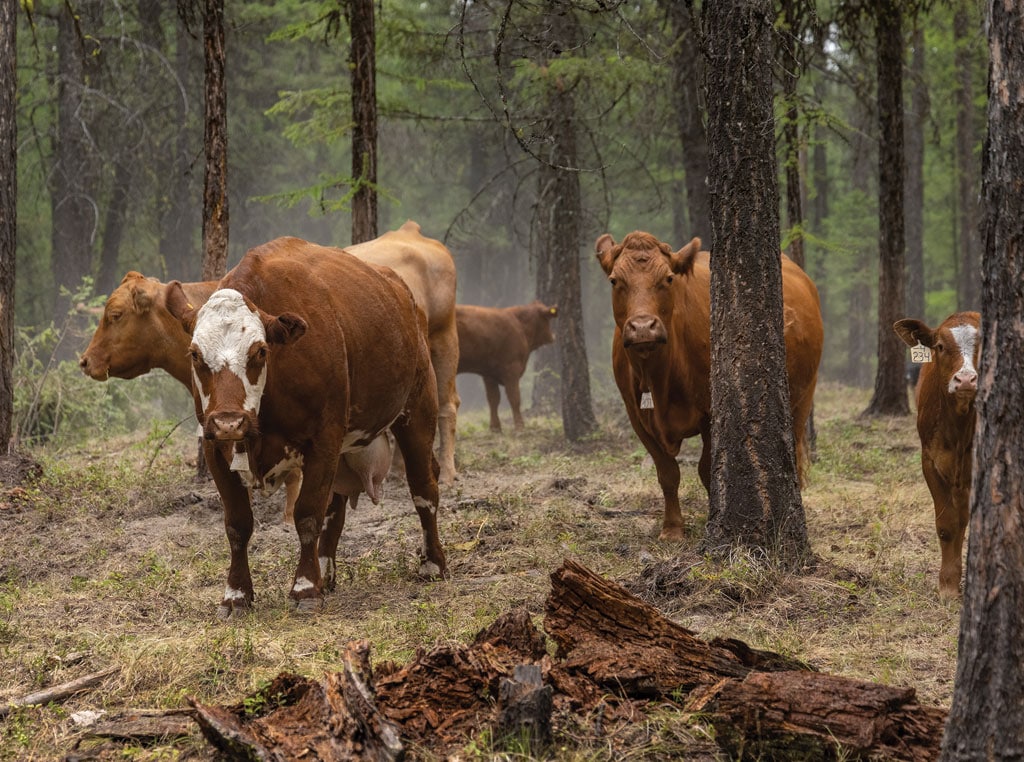
LIVESTOCK/POULTRY, SUSTAINABILITY
Cattle to the Rescue
Targeted grazing can reduce British Columbia’s forest fire risk.
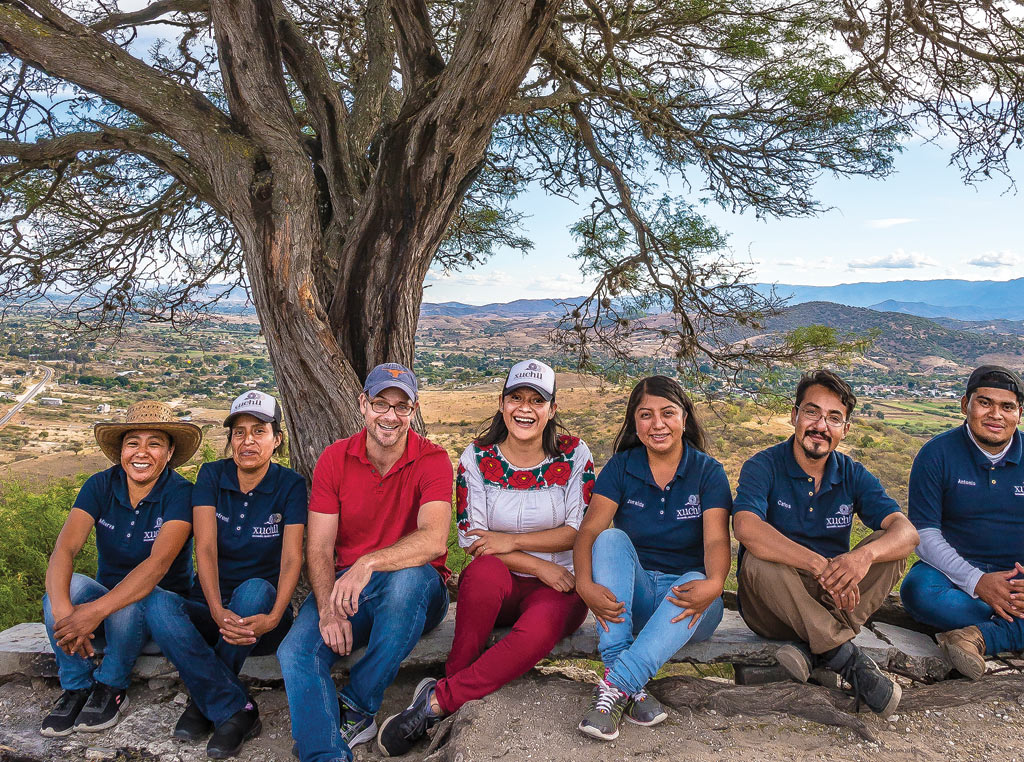
AGRICULTURE, RURAL LIVING
Secrets of Mesquite
A rural Mexico start-up turns a nuisance tree into food.

